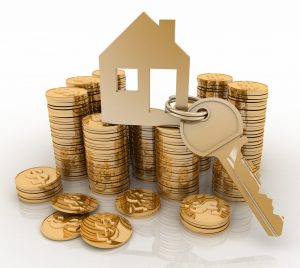 Mortgage credit availability is on the rise while more residential properties moved into a state of equity richness according to a pair of data reports issued today.
Mortgage credit availability is on the rise while more residential properties moved into a state of equity richness according to a pair of data reports issued today.
The Mortgage Bankers Association [1] (MBA) reported that its Mortgage Credit Availability Index [2] (MCAI) increased by 1.5% in July to a reading of 126.9. The index was benchmarked at 100 in March 2012, and a decline indicates tightening lending standards while index increases support loosening credit.
The Conventional MCAI, which covers non-government loan programs, increased 2.9% last month while the Government MCAI, which examines the FHA, VA, and USDA loan programs, saw a 0.4% uptick. Two component indices of Conventional MCAI also recorded increases: The Jumbo MCAI was up by 5% and the Conforming MCAI took a 1.2% rise.
"Credit availability rose slightly in July–the first increase in eight months–as the supply of certain types of adjustable-rate mortgages and jumbo loans increased," observed Joel Kan, MBA’s AVP of Economic and Industry Forecasting. "The improvement was more of a leveling off from the precipitous drop earlier this spring."
Kan added that while mortgage credit availability was more than 30% lower than a year ago and was near its lowest depth in six years, July’s report "signals that lenders saw conditions improve this summer, as forbearance requests flattened, and record-low mortgage rates spurred strong levels of purchase and refinance activity." However, he cautioned that new spikes in COVID-19 cases and an economy that has yet to regain pre-pandemic traction "may temper borrower demand and the overall improvement in the economy."
Separately, ATTOM Data Solutions [3] released its Home Equity & Underwater Report [4] covering the second quarter. The new report found equity-rich properties accounted for 27.5% of the nation’s 55.2 mortgaged homes during the second quarter, an increase from 26.5% in the first quarter, despite the economic turmoil created by the COVID-19 pandemic.
On the flip side, the new report determined that 3.4 million mortgaged homes, of 6.2% of all mortgage properties, could be defined as seriously underwater, with a combined estimated balance of loans secured by the property at least 25% more than the property's estimated market value. This is down from 6.6% in the first quarter.
Forty-nine of the 50 states saw a quarterly increase in the percentage of homes considered equity-rich while only three showed an increase in the percentage that were seriously underwater. Seven of the 10 states with the greatest gains in the percentage of equity-rich homes were in the South and Midwest, most notably Georgia (17.5% in the first quarter to 20% in the second quarter) and Idaho (up from 33.6% to 35.4%), although the top 10 states with the highest share of equity-rich properties were all in the Northeast and West regions, led by California (43%), Vermont (39.1%) and Hawaii (38.6%).
"Homeowners saw their equity rise far and wide throughout the United States during the second quarter of this year in yet another sign of the housing market punching back against the coronavirus pandemic," said Todd Teta, chief product officer with ATTOM Data Solutions. "More property owners rose into equity-rich territory and escaped the seriously underwater lane, putting more money into the average household. The housing market still faces enormous challenges, given that unemployment remains historically high and the broader economy contracted severely in the second quarter. If that continues, owner equity will be seriously threatened. But for now, homeowners are enjoying the gains when it comes to what, for most, is their most significant asset."